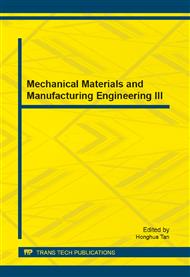p.202
p.207
p.212
p.216
p.220
p.224
p.228
p.232
p.236
Analysis on Aerostatic Response for Hongkong-Zhuhai-Macao Great Bridge in Construction Stage
Abstract:
Based on the wind tunnel experiment for aerostatic force of section model of Jianghai direct ship channel bridge of Hongkong-zhuhai-macau great bridge in construction stage, one calculation program considering the geometric nonlinearity and aerostatic nonlinearity is prepared by using ANSYS parametric design language in order to calculate the nonlinear aerostatic response for long-span cable-stay bridges. Then, the FEA model of Jianghai direct ship channel bridge of Hongkong-zhuhai-macau great bridge in construction stage is established to analyze the three-dimensional nonlinear aerostatic stability. And the aerostatic response with different position of bridge is also calculated. The research result indicates that the aerostatic instability can not occur in Jianghai direct ship channel bridge of Hongkong-zhuhai-macau great bridge in its construction stage. And, the max torsion deformation, transverse and vertical displacement of construction stage occur in the terminal edge of both left and right span and decreases gradually near to main tower.
Info:
Periodical:
Pages:
220-223
Citation:
Online since:
November 2013
Authors:
Price:
Сopyright:
© 2014 Trans Tech Publications Ltd. All Rights Reserved
Share:
Citation:


